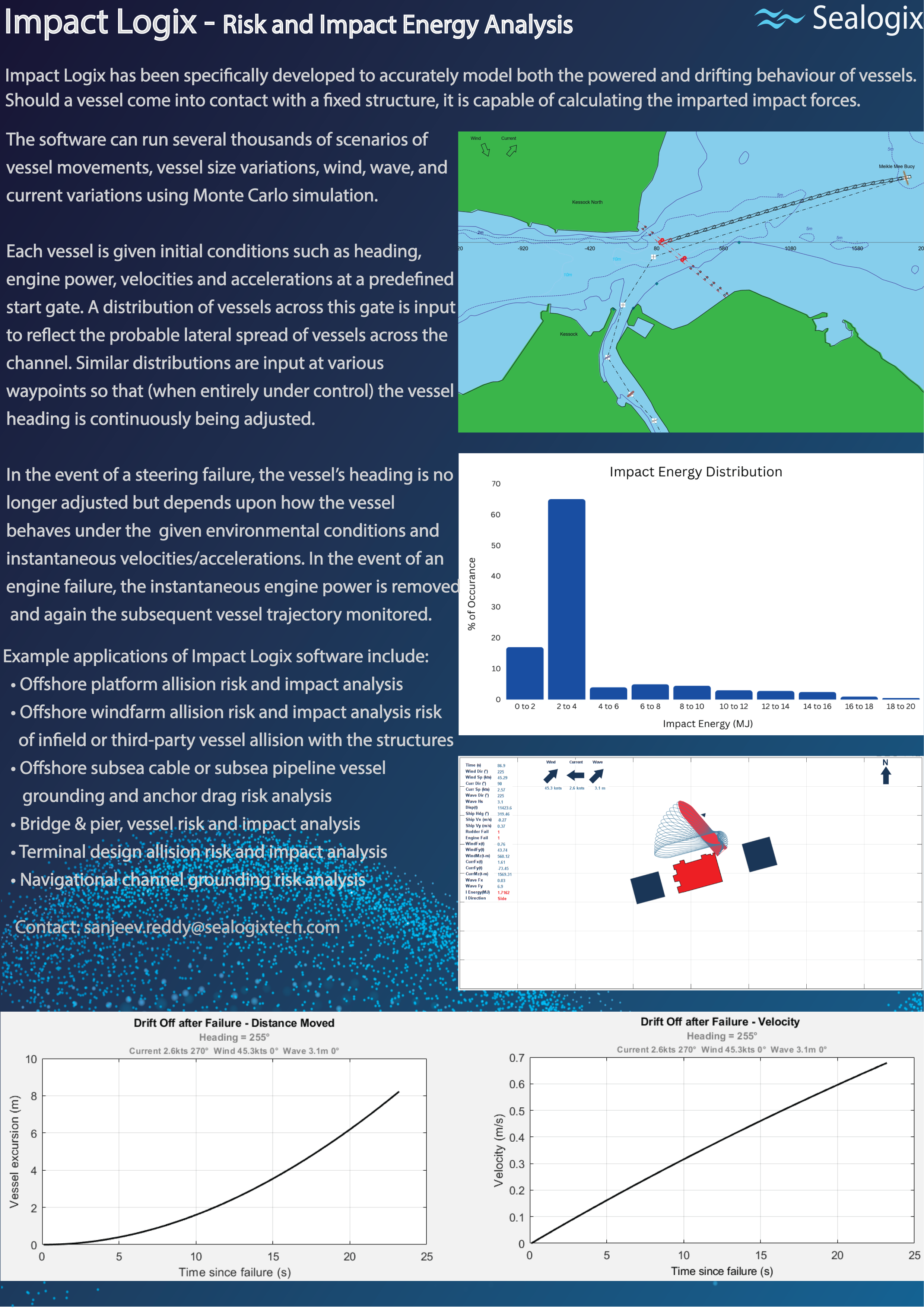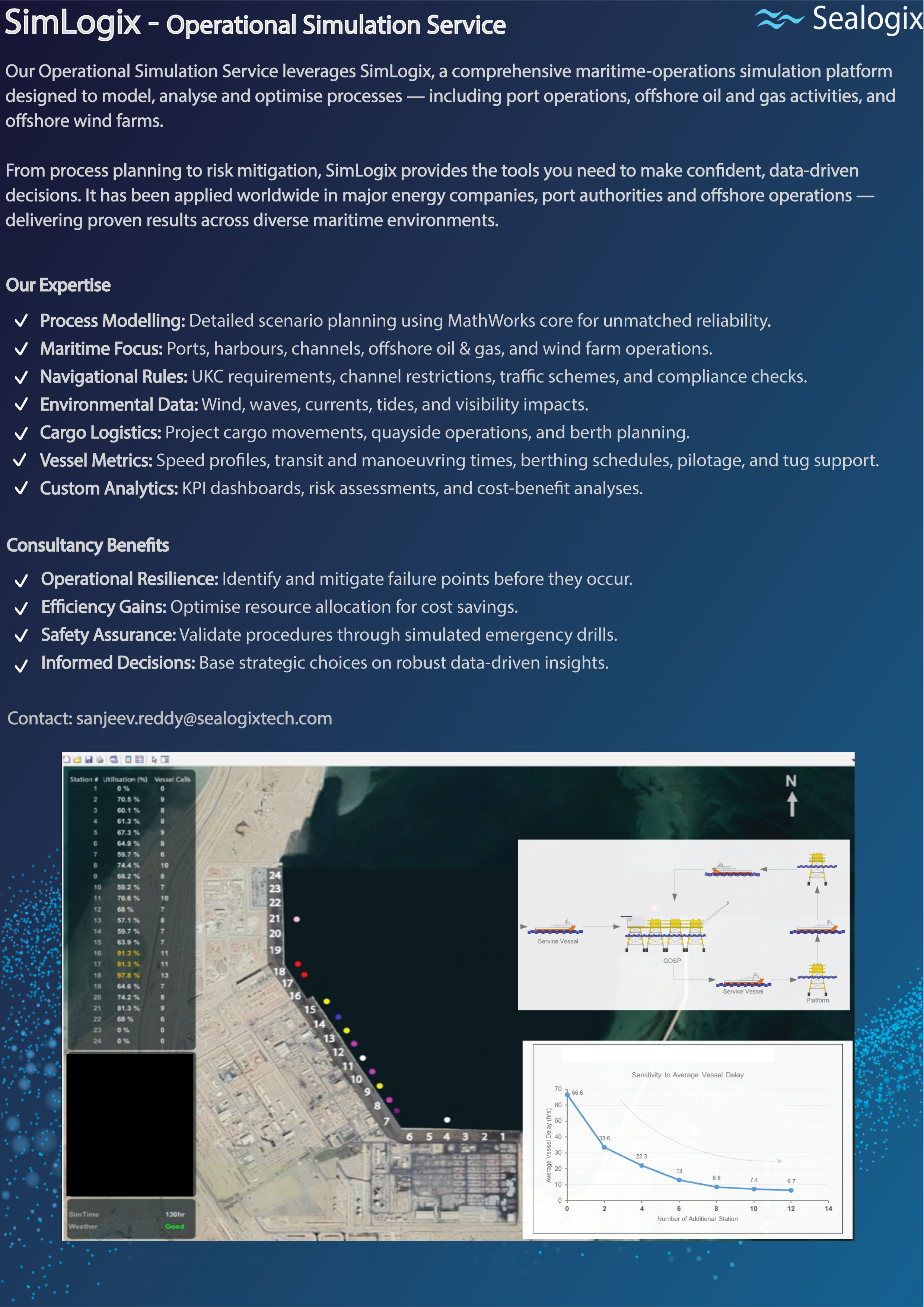About Us
Personal
SeaLogix Technologies is guided by extensive expertise in naval architecture, ship simulation, port design, operational simulation, and marine risk analysis. Core competencies of personnel include vessel mooring analysis, operational simulation, marine risk assessments, mathematical modelling of vessel behaviour in shallow waters, and evaluation of port layouts, channel and turning circle dimensions, and tug requirements to ensure safe operations under prevailing environmental conditions.
Experience spans shipyard practice, fabrication processes and construction methods, as well as vessel operations and machinery systems.
Research & Development
SimLogix
Over several decades, numerous operational simulation studies in the maritime sector highlighted a gap in tools capable of handling complex shipping operations with efficiency and precision. To address this, SimLogix was developed and authored to enable speedy and optimum analysis of port and offshore operations.
The software is built on the SimEvents library and has undergone a rigorous quality assurance process before being deployed in multiple large-scale operational simulation projects. It is designed to model traffic in restricted waterways and offshore environments, while also accounting for shoreside logistics, vessel seakeeping, mooring forces, berth occupancy, downtime, test setups, and optimisation of tug and pilot requirements.
ImpactLogix
Through decades of experience in analysing vessel drifting, powered collisions, and allisions in waterways — including risks involving pipe-lay vessels, cable-lay vessels, sheer-type clay carriers, and underwater construction barges — it became evident that the industry lacked a suitable tool to reliably model these hazards. To fill this gap, ImpactLogix was conceived and developed as a comprehensive simulation platform for marine risk.
The software is designed to simulate grounding, ship-to-ship collision, ship-to-structure allision, and anchor-drop risks under realistic site conditions. Environmental factors such as wind, waves, and currents are incorporated, together with vessel-specific power, steering inputs, and tug assistance. ImpactLogix also enables the modelling of mitigation measures such as subsea asset protection, tug intervention, and alternative mooring strategies. Developed in line with OCIMF and BS6349 standards, ImpactLogix calculates vessel trajectories, velocities, accelerations, and impact loads, and employs Monte Carlo simulation techniques to generate thousands of iterations based on historical weather and traffic data to produce distributions of collision frequency and impact energy with and without mitigation measures.
Credentials
Professionals with extensive marine and consultancy experience, backed by a solid academic foundation from University College London (UCL) and Imperial College Business School, London, with recognition as Chartered Engineers (CEng) in the United Kingdom and membership of the Royal Institution of Naval Architects (RINA).


